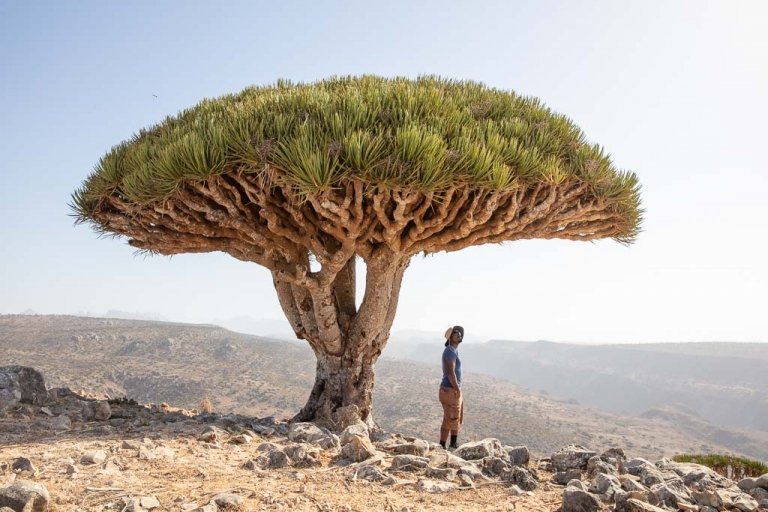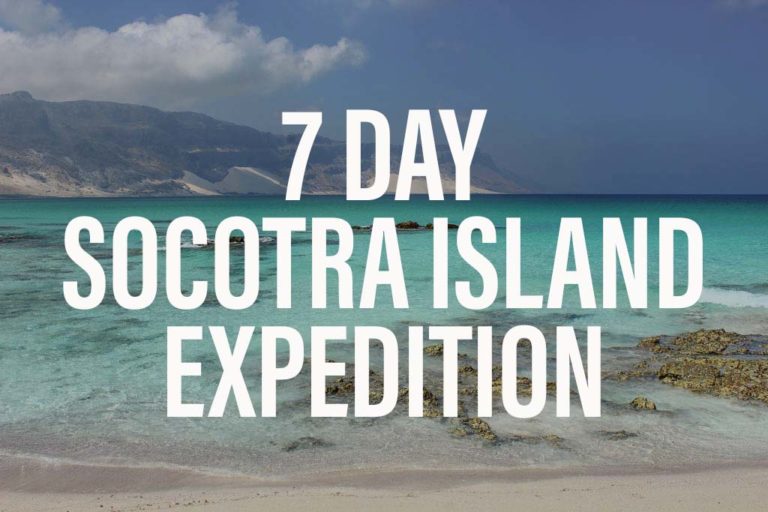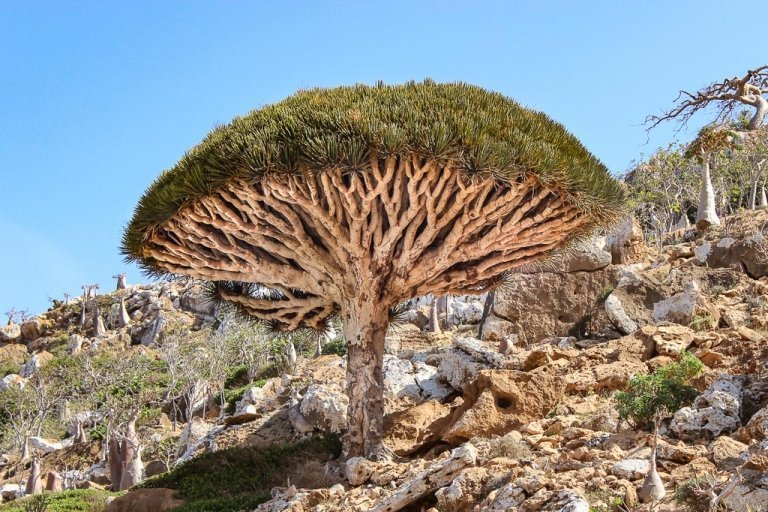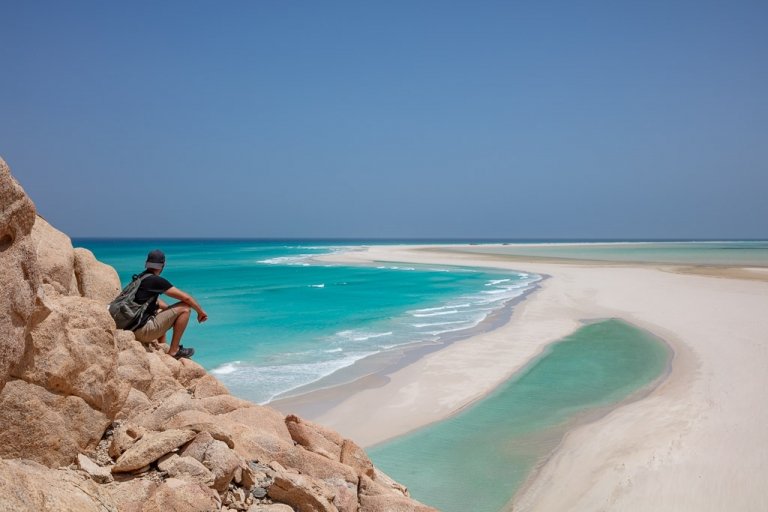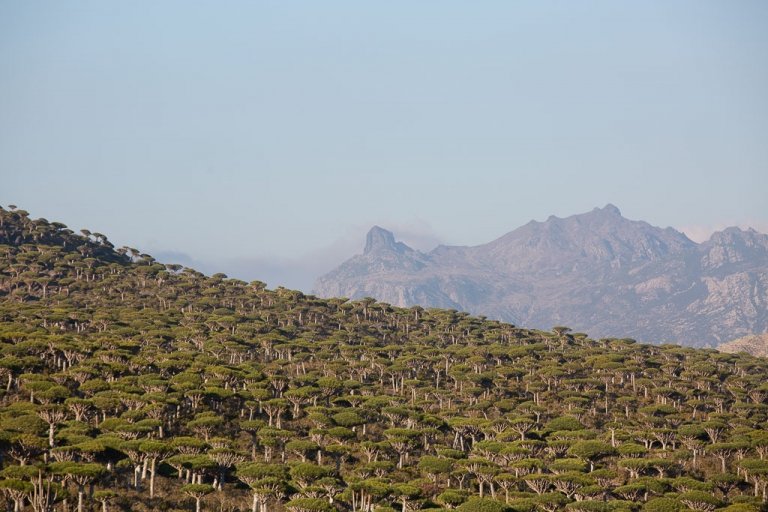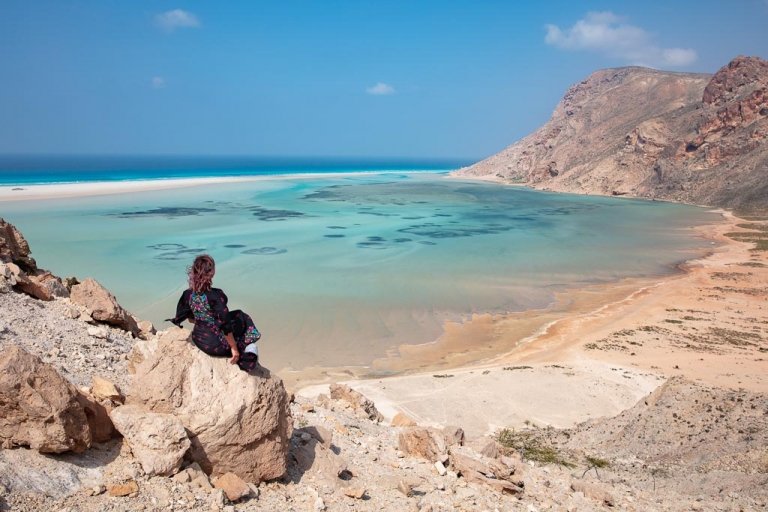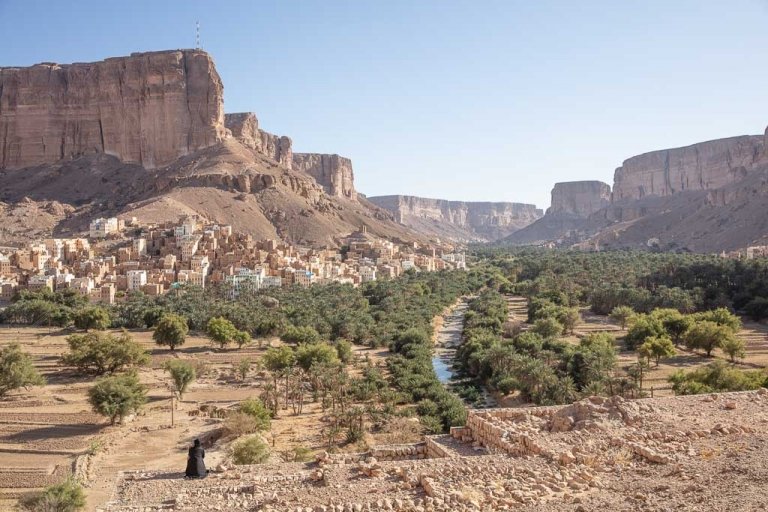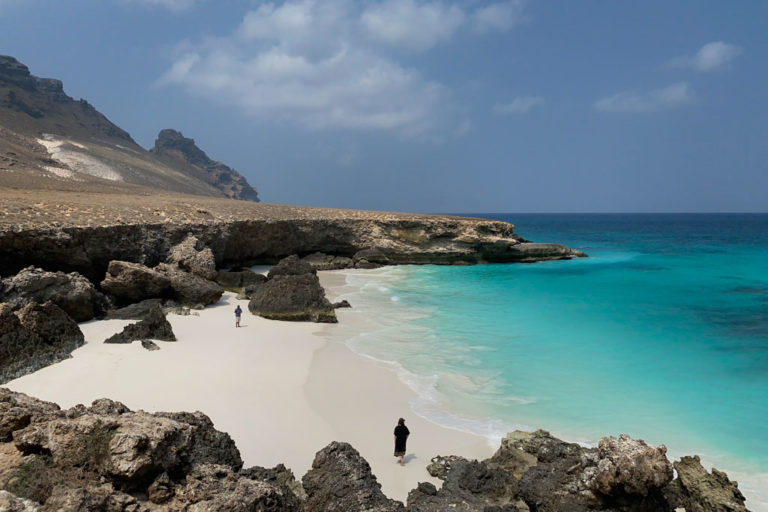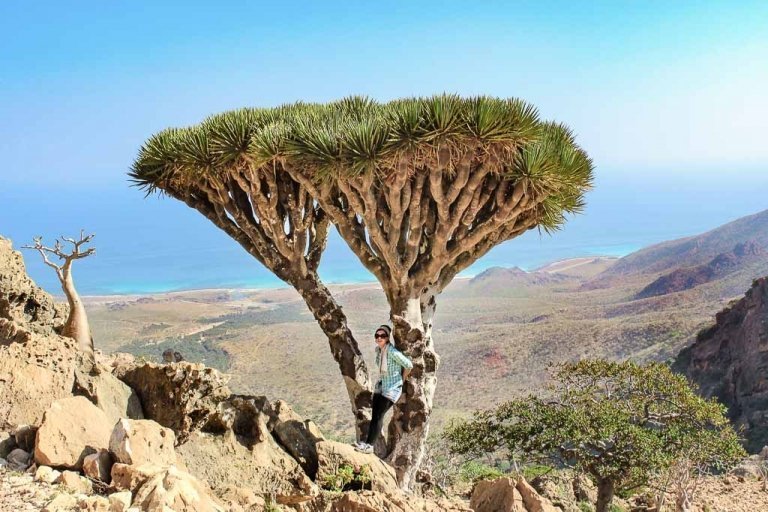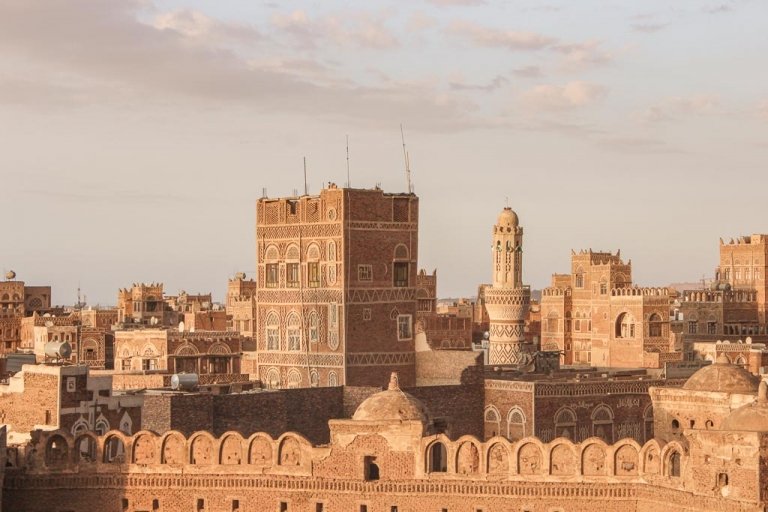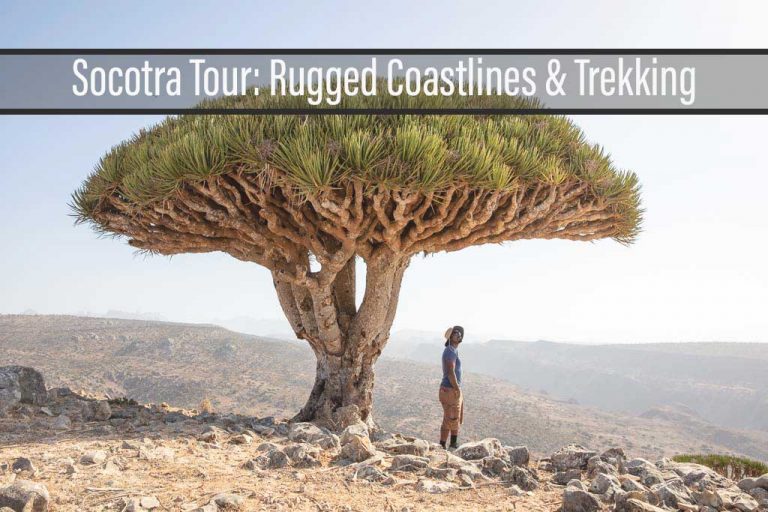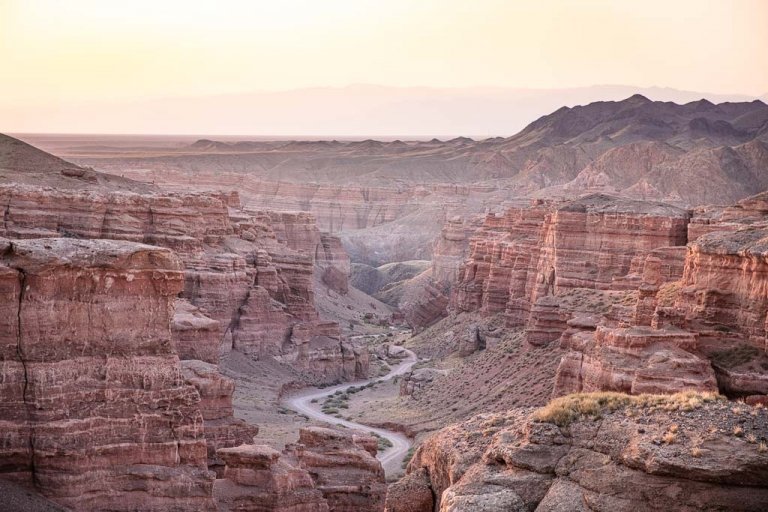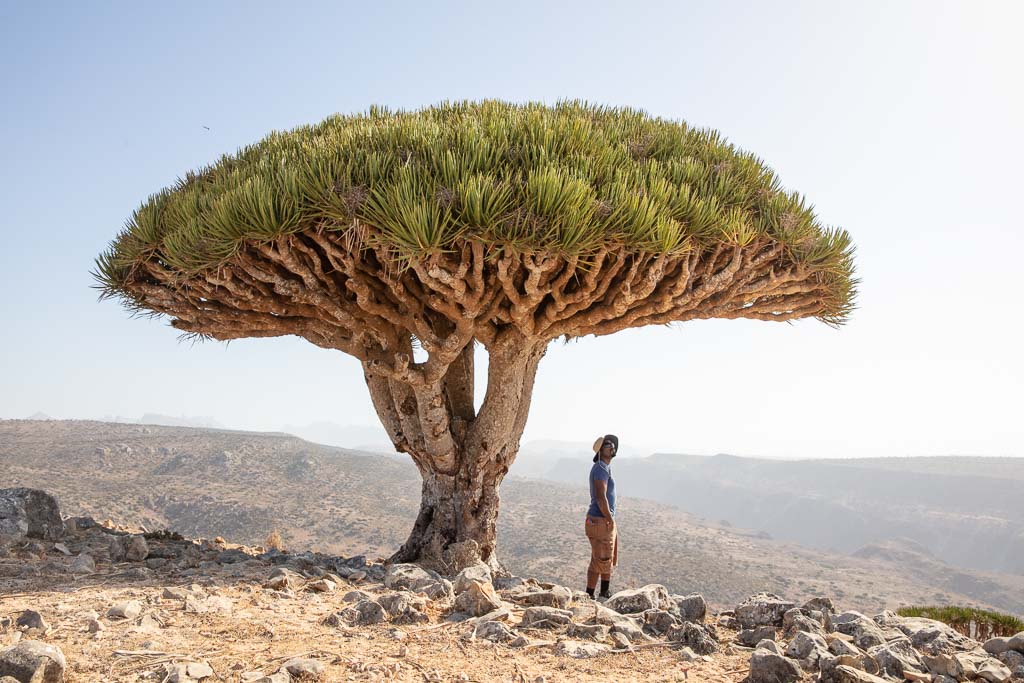
Socotra Travel Guide
Updated April 2024, The Socotra Travel Guide was originally written in May 2019
After several years of being nearly cut off from the outside world, Socotra is finally opening back up to tourism again. In this Socotra Travel Guide, you’ll learn everything you need to know to visit the mysterious island coined ‘the most alien-looking place on Earth’.
Socotra is located in the Arabian Sea nearly halfway between Yemen and Somalia. About 80 million years ago during the Miocene Epoch, the island was separated from the Arabian Peninsula and left in isolation. Thanks to this long-standing isolation, Socotra was allowed to become home to one of the highest concentrations of endemic flora and fauna on Earth, putting it up in the ranks of places like the Galapagos, Hawaii, New Caledonia, and New Zealand.
In 2015 war broke out on the mainland of Yemen, though it was spiraling in that direction for several years leading up. This war is what cut Socotra nearly off from the outside world until late 2018 when new flights from Cairo had been announced. If you’re starting to plan your own visit to Socotra, I recommend picking up a copy of Bradt’s Socotra Guidebook, the first-ever in print (I also contributed to it too!).
Need Travel Insurance and Evacuation Services for Socotra?
Start shopping for travel insurance plans over at IATI Insurance. Readers of the Adventures of Nicole get a 5% discount off your plan.
The Adventures of Nicole partners with Global Rescue to offer the world’s leading medical evacuation and security advisory services. To travel with peace of mind, shop evacuation coverage at Global Rescue.
Looking to join one of our group trips to Socotra? Click here for more info, itineraries, and to sign up
- Socotra Travel Quick Info
- Getting A Yemeni Visa
- How To Travel To Socotra
- Money
- Getting Around
- Accommodations
- Where To Go On Socotra
- The Other Islands Of The Socotra Archipelago
- Solo Female Travel In Socotra
- Flora & Fauna
- Socotra Travel Safety
- Socotra Souvenirs
- Communication & Electricity
- What To Pack For Socotra Travel
- Socotra Travel Costs
- Other Random Socotra Travel Information Worth Noting
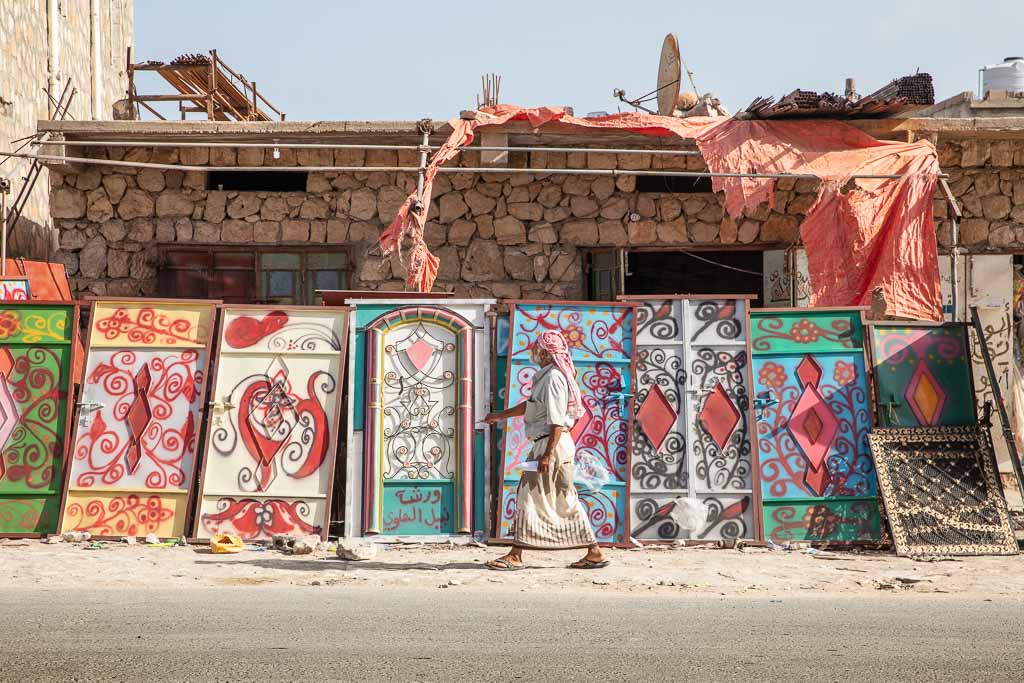
Socotra Travel Quick Info
Currency- Yemeni Rial
Language- Socotri is the language of the island, a Semitic language. Arabic is spoken widely as well. English, Russian, French, and German-speaking guides can be hired as well.
Population- Approximately 70,000.
When To Go- October through mid-May is the best time to visit as there are less likely chances of storms. February to May have the driest and clearest weather, while October to January has a higher likelihood of rain though still relatively low. Mid May through September is generally not recommended due to storms and winds, however, kite surfers will find the best conditions during these months.
What To Wear- More conservative clothing will be better welcomed when in towns and villages. Women should wear clothing that covers the body, shoulders, and legs (wearing a headscarf will be very welcomed in towns/villages too, though they are not compulsory), and men should avoid shorts above the knee when visiting towns and villages. When out hiking, at the beach, camping, and exploring nature this is more relaxed.
Temperatures can get quite hot and humid on Socotra, though in the Haggier Mountains nighttime temps can get cool enough to warrant a light jacket or fleece.
What not to wear- Skimpy clothing outside of beach/swimming areas. Of course, Socotris will likely not say anything but know that walking around half-naked is disrespectful to the locals as Socotra is still a very conservative society.
Check out Socotra in photos
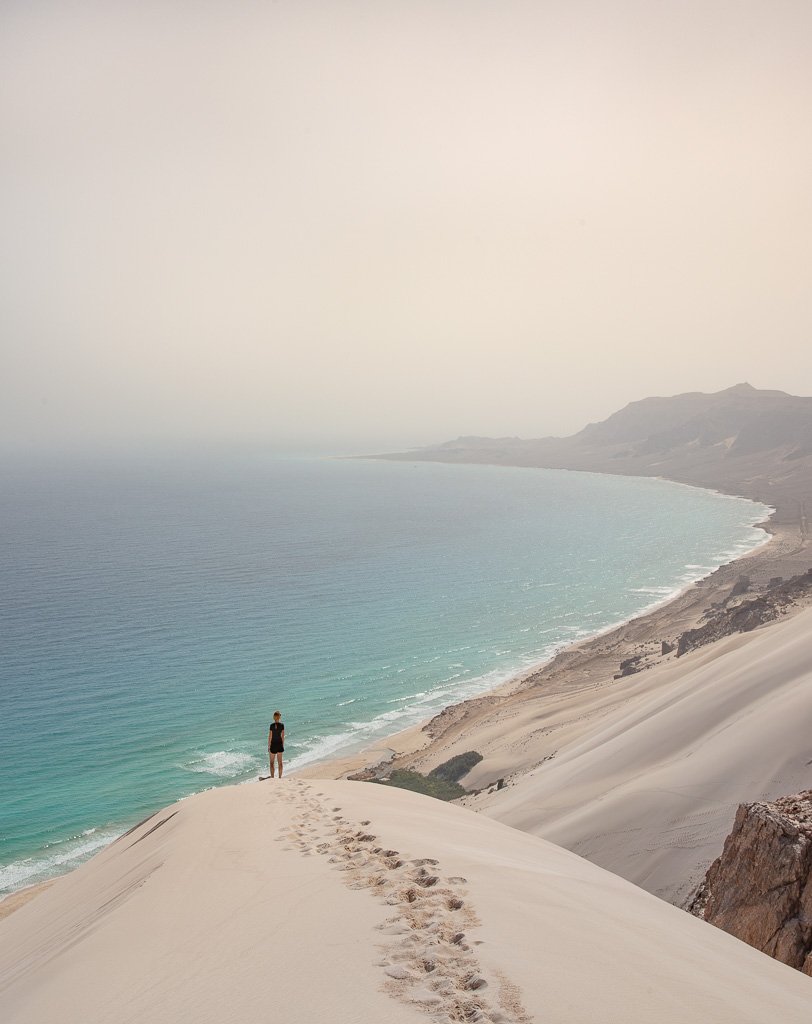
Getting A Yemeni Visa
Getting a Yemeni visa isn’t something you can just go do on your own at present. Yemeni embassies and consulates will not issue tourist visas. You will need to apply via a tour agency in Socotra that will get the visa approved by the government and send you a paper copy of this.
You will need this visa approval paper in order to board your Yemenia or Air Arabia flights (or arranging the ship from Salalah if traveling by sea). This visa paper will also be needed to clear immigration at Socotra Airport if flying in via Abu Dhabi or at Aden Airport if coming from Cairo (or at Socotra port if you will arrive by ship).

Note that you may be asked if you’d like your passport stamped on arrival. If you do not they will stamp a separate sheet of paper (this is thanks to the US making travelers to a handful of Middle Eastern countries ineligible for ESTA if they travel to any of them).
If you want to read the full guide on how to get a Yemeni visa, click here.
Please do not email me asking how you can get a Yemeni visa without booking an agency because YOU don’t want to be guided, pay for it, etc. I DO NOT MAKE THE RULES.
Read: How to get a Yemeni visa to visit Socotra
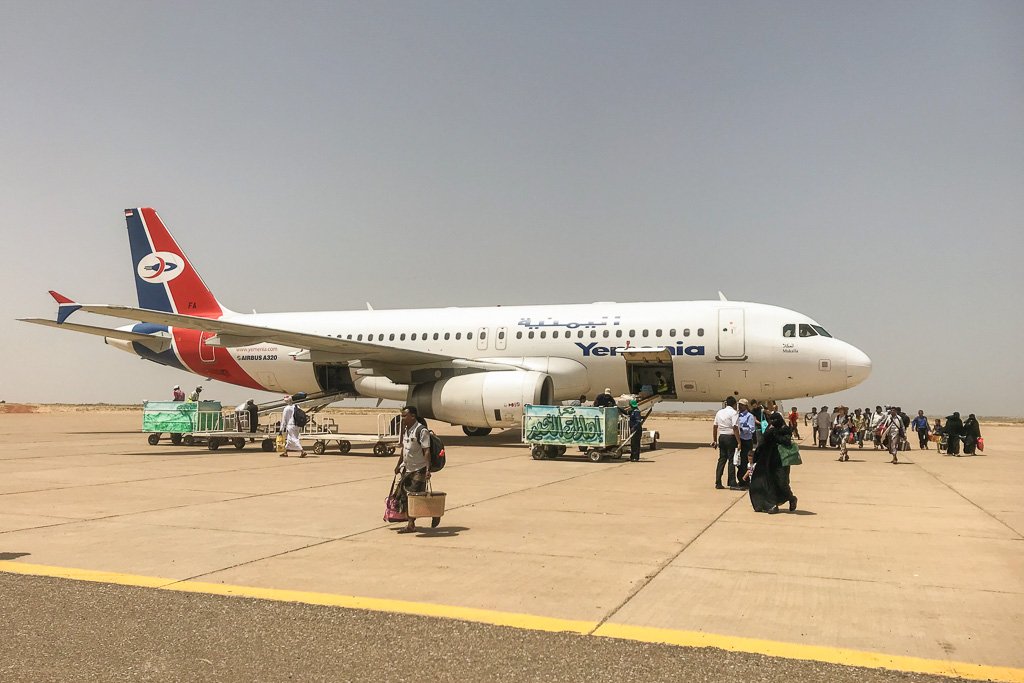
How To Travel To Socotra
I have an entire post dedicated to explaining how to get to Socotra in detail that you can visit here.
You will either arrive by Yemenia flight IY611/420 from Cairo/Aden or by Air Arabia Flight 476 from Abu Dhabi, or via the cement ship from Salalah, Oman. Neither route is easy to arrange so if you are serious about visiting I recommend reading the above-mentioned post.
There are also sporadic departures of ships from Al Mukalla bound for Socotra, however, this would require you to already be in the mainland of Yemen which is generally not recommended. It’s also worth noting that there has been an uptick in piracy in the Gulf of Aden since 2015.
Everything you need to know: How to get to Socotra
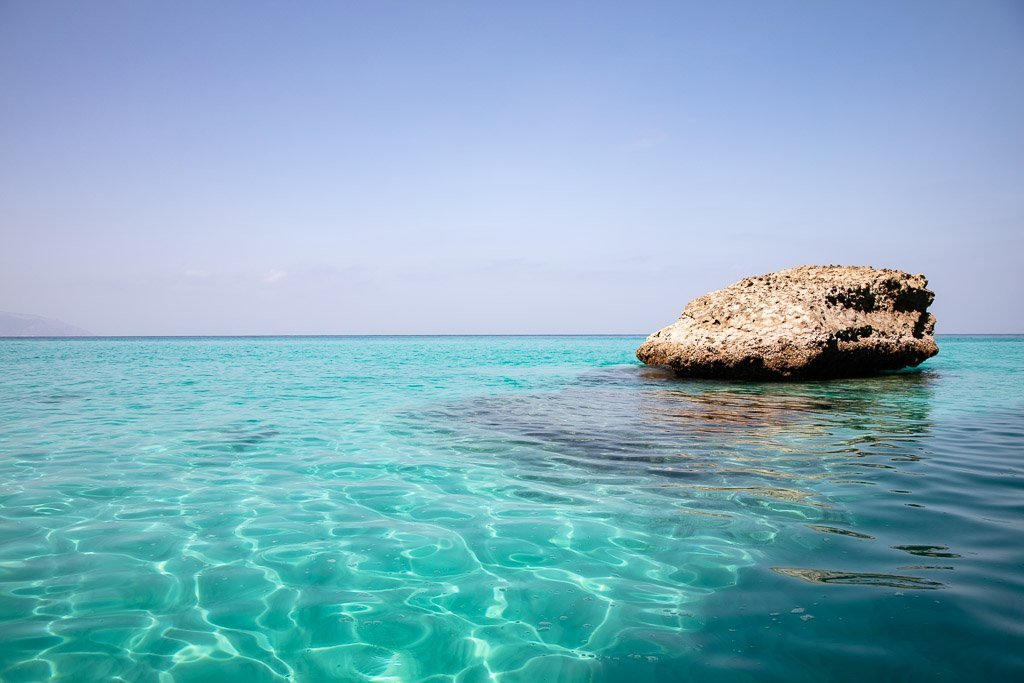
Money
USD is the most widely accepted foreign currency and the easiest to exchange on the island. Bring enough cash in USD to pay for your trip.
For small personal purchases such as souvenirs, you can convert USD into Yemeni Rial in Hadiboh at one of the many exchange offices around town.
As of April 2024, it was trading at about 1,200 YER to the dollar. You can easily pay for purchases with small denominations of USD. $1 notes are best (think drinks and snacks from shops and small souvenirs).
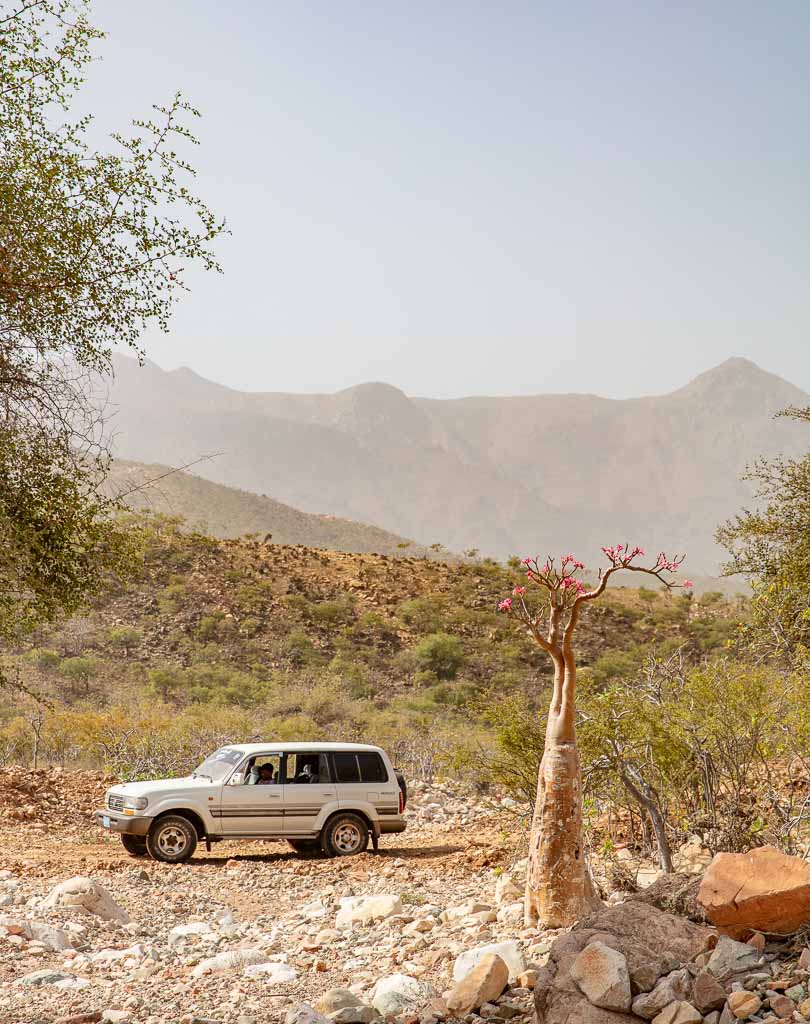
Getting Around
As getting a visa secured to visit requires booking a tour, you’ll surely be on a tour of the island.
You will get around the island by 4WD mostly, and dhow boat when visiting Shua’ab Beach. There are several hikes and camel trekking that can be done on the island as well.
Please note that there are no car rentals on the island and no formal public transport aside from the occasional buses I’ve seen between Hadiboh and the communities along the northwest coast and Hadiboh to the communities along the northeast coast to Qalansiya. I’ve also seen smaller minibusses between smaller towns and villages on Socotra, but I have not found any formal timetables.
Please note that there are no car rentals on the island and no formal public transport aside from the occasional buses I’ve seen between Hadiboh and the communities along the northwest coast and Hadiboh to the communities along the northeast coast to Qalansiya. I’ve also seen smaller minibusses between smaller towns and villages on Socotra, but I have not found any formal timetables.
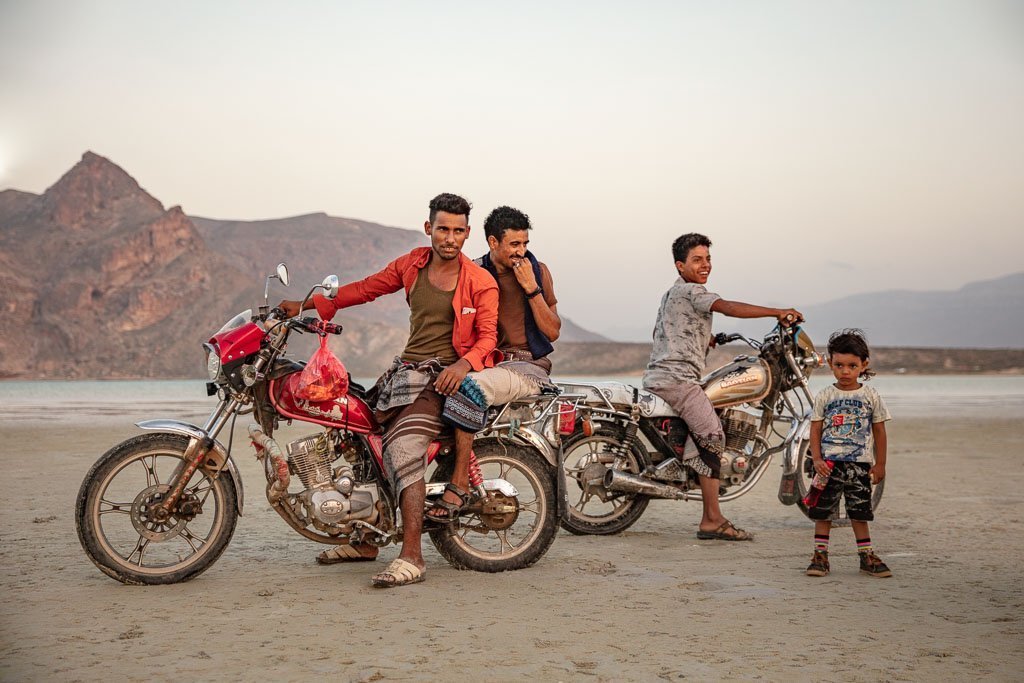
Accommodations
While there are two hotels in Hadiboh you’ll most likely be camping in tents for the duration of your visit. Many places you’ll want to visit are far from Hadiboh and in my personal opinion going back and forth from Hadiboh every day is a complete waste of time, alas I can’t tell you how to live your life…
There are two hotels in Hadiboh- Summerlands Hotel and Socotra Eco Lodge, but please note both are very basic.
Where To Go On Socotra
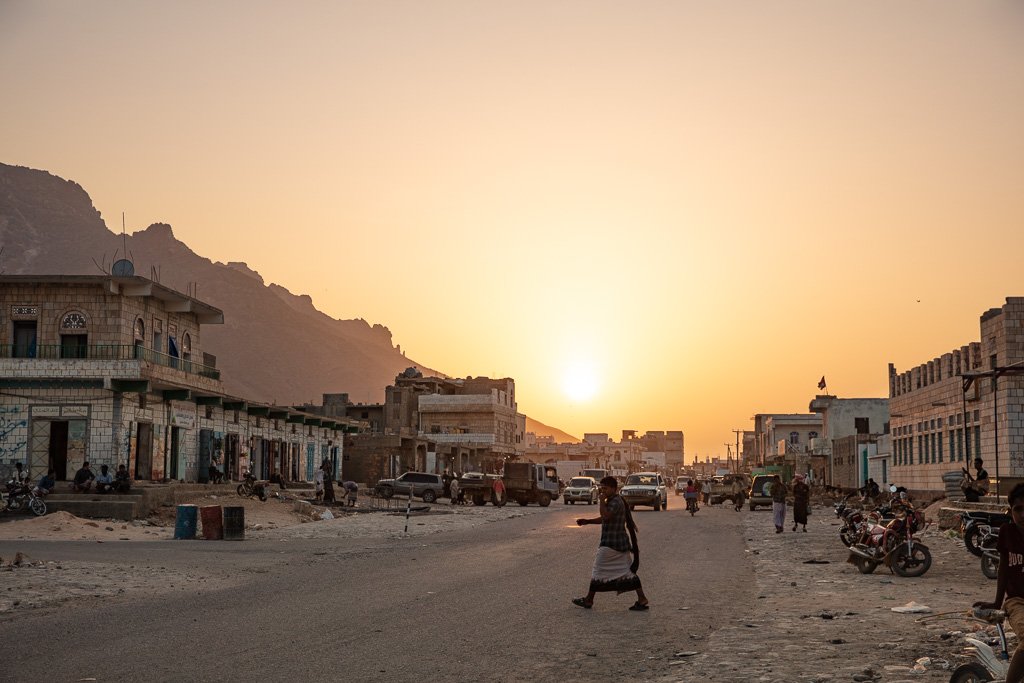
Hadiboh
With the gorgeous Haggier Mountains as a looming backdrop, Hadiboh is the main city on the island with about 8,000 residents. Most all the shops, offices, and supplies are centered here. There are small restaurants and street food, a bazaar, money exchange, a medical clinic, and more here in Hadiboh.
It’s definitely worth spending a day, or at least part of a day exploring Hadiboh. Don’t miss the fish market just out of town.
Expect to get a lot of stares, curious interactions, smiles, and hellos from local Socotris. More often than not people will walk up to you and try to communicate or ask you to take their photos.
Unfortunately, there is a lot of garbage all over the streets in Hadiboh. Locals and foreigners alike have tried to make efforts to change this but lose hope when in a matter of days it looks exactly the same.
In reality, the island needs a landfill and infrastructure in place as this is a larger problem than just simply cleaning up (they need a place to put waste). Another attribution to the problem is the import of packaged goods from other nations (Saudi Arabia, UAE, etc), that use A LOT of plastic packaging.
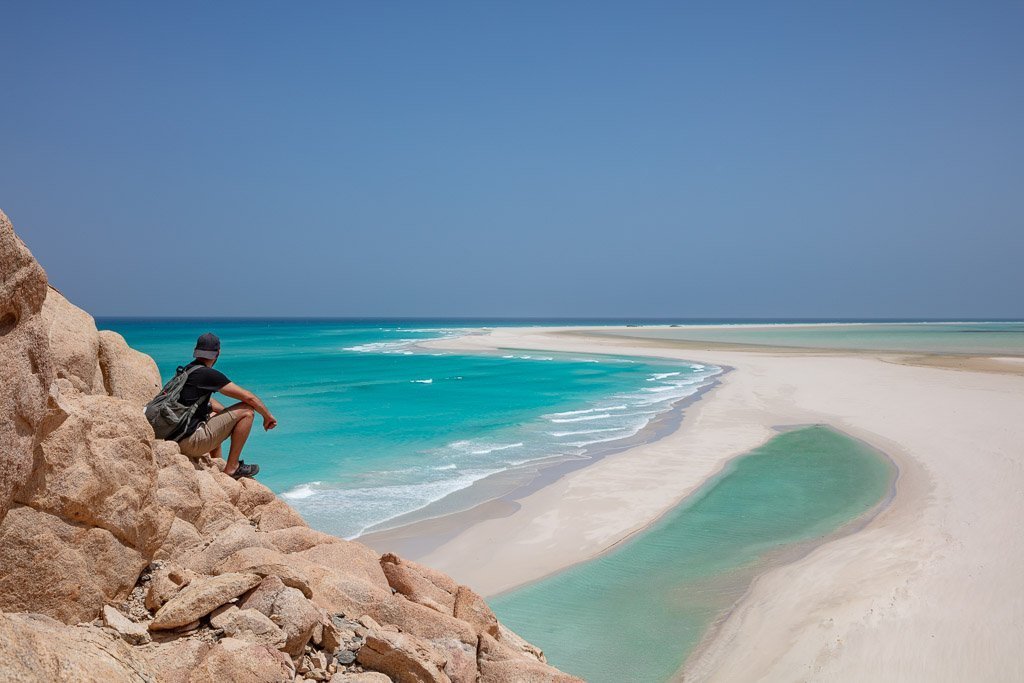
Northwest
The northwest of Socotra is home to some of the most beautiful coastal scenery on Earth. Think ribbons of white sand, waters that transition from aquamarine to turquoise to emerald green, and finally to sapphire.
- Qalansiya- This is Socotra’s second-largest city and the jumping-off point for adventures to Shua’ab Beach. It’s worth spending at least a couple hours meandering down the handful of streets, expect to attract a crowd of local kids.
- Detwah Lagoon- Imagine blinding white sand with swirls of crystal clear water– this is Detwah Lagoon. Detwah is great for swimming and checking out the island’s marine life. It’s almost guaranteed Abdullah ‘the caveman” will find you here and invite you out for a few hours of catching seafood which he will take you to his cave and cook up. On the west end of the lagoon, there is a great lookout up a hill. A lovely woman (a sister in law of ‘the caveman’) named Saadia lives near the Detwah camp and is a joy to spend time with.
- Shua’ab- With no road you’ll most likely arrive here by dhow boat from Qalansiya, but hiking here is a possibility. Shua’ab is a small and remote village set along a beautiful white sand beach flanked by arid cliffs. On the boat ride out here keep your eyes peeled for spinner dolphins.
- Balaqthan Sinkhole- Roughly halfway between Hadiboh and Qalansiya you’ll reach the village of Balaqthan (just before nearby Ghubba) just off the main paved road. You can follow dirt tracks out there to visit the village (if you arrive when kids are on the afternoon break they’ll be really curious) which has a decent-sized sinkhole just off the beach. Many locals believe it’s the result of a meteor strike (similar to Bimmah Sinkhole in Oman), however, it is more than likely just a result of stone that collapsed here long ago.
- Balaqthan Salt Mine- Directly across the main road from the Balaqthan Sinkhole is the Balaqthan Salt Mine. This circular depression is filled with salty water that evaporates, allowing for locals to mine salt from the pool.

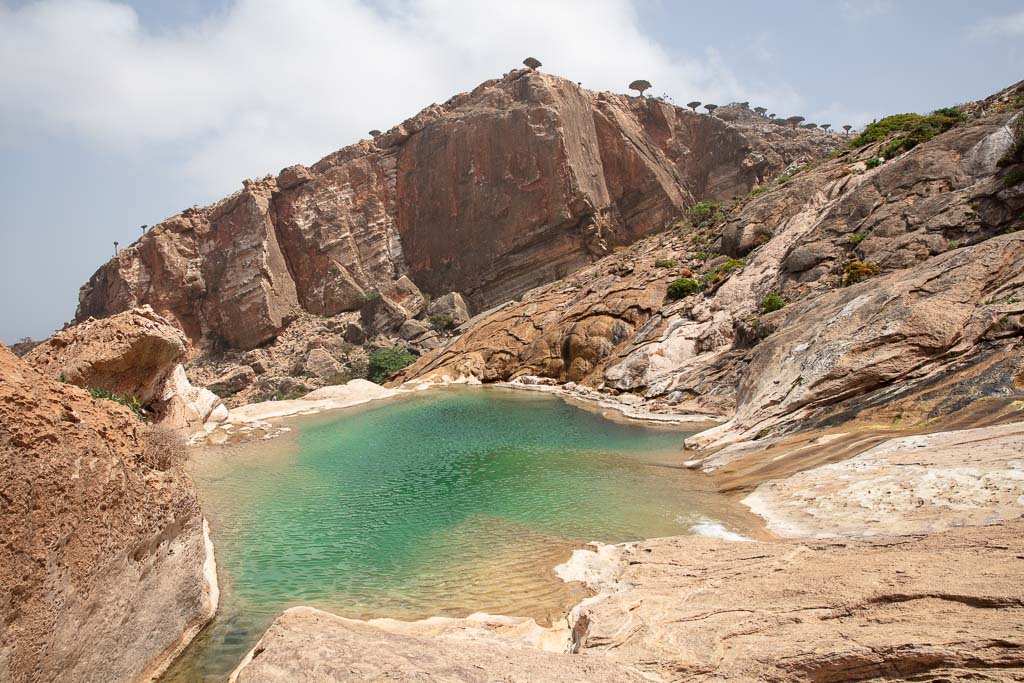
Northeast
Socotra’s northeast offers up caves, plateaus, wild beaches, dunes, and heaps of endemic flora.
- Homhil Protected Area- Home to an abundance of Socotra’s endemic flora including dragon blood trees, bottle trees, and frankincense. Near the edge of Homhil, there is a natural pool that has epic views down onto the Arabian Sea below. After heavy rainfall in October 2019, the tracks to Homhil were washed out but should be restored soon.
- Arher Beach & Dunes- This is a popular camping site for locals. Arher has a long white sand beach and is backed by massive white dunes pushed up against the cliffside. When I was here in March 2019 the beach was lit with blue bioluminescent plankton at night so do check for it.
- Dihamri Marine Protected Area- Socotra’s prime spot for snorkeling and diving along reefs. There is a small dive shop that rents out snorkel masks and fins as well as dive gear.
- Hoq Cave- The largest cave on the island accessible by a two-hour uphill hike from the village of Saqra. Trust me, the trek is worth it for what the cave holds. Fascinating rock formations, larger than life stalagmites and stalactites, a lake, and more await you in Hoq Cave. Bring a headlamp and flashlight.
- Delisha Beach- Not far from Hadiboh is the little beach area of Delisha. Prior to the cyclones that ravaged the island in 2015 Adeeb’s Eco Lodge sat right off the beach. It is currently being rebuilt and you can camp there.
- Ras Irisal- As far east in Socotra you can possibly go. Ras Irisal is a small beach from which most of the fisherman in the village of Irisal depart from. This is also the spot where the Indian Ocean and the Arabian Sea meet. Make sure and stop by the village as well, the locals are friendly and the kids will get a kick out of playing with foreigners.
- Crab City- On a small cape-like piece of land that juts out to the north into the sea near the furthest east end of Socotra sits a beach facing toward the northeast that has thousands of little pyramids on it. Welcome to Crab City. These little pyramids are formed by the ghost crabs that call this beach home as they dig protective tunnels.
- Irisal Beach- Irisal Beach sits on the opposite side of that little cape mentioned above, facing to the northwest. This is one of my favorite beaches in Socotra as it offers amazing views crystal clear waters and the Arher Dunes in the distance.
- Meeting Point Of The Oceans- This is the easternmost point of Socotra Island. You’ll know if you’re in the right place if you reach a white sandy beach with humongous whale vertebrae on it. Continue on down to the water and you’ll find a rocky channel with a small rocky outcrop on the other side where you can find lots of balloon fish swimming around.
- Rash Marine Protected Area- Another diving and snorkeling hotspot.
- Qaria Lagoon- Home to a small village on its shore. Keep an eye out for pink flamingos in the lagoon.
- Socotra Folk Museum- In the village of Riqela, along the main road connecting Hadiboh to Arher, you’ll pass the one-room Socotra Folk Museum. There are a handful of items inside including shells and corals collected from the shores, a sail, and various cultural artifacts including traditional Socotri clothing, a baby’s bassinet, and more.

Haggier Mountains & Central Socotra
This is where Socotra gets wild with deep wadis, jagged peaks, an out-of-this-world forest, and friendly Socotri Bedouin people.
- Haggier Mountains- Rising from the Earth to heights of over 1,500 meters and home to Skånd Peak, Socotra’s highest point. The Haggier Mountains conveniently sit just south of Hadiboh. Several treks will take you to explore the Haggiers.
- Dixam Plateau- This is the heart of Socotra, smack in the middle of the island. Dixam Plateau is home to a scattering of dragon blood trees, a dragon blood tree nursery, and views into Wadi Dirhur.
- Wadi Dirhur- The Grand Canyon of Socotra. From Dixam Plateau delve 700 meters down into the oasis-like canyon. If you make a short detour to the southeast where Wadi Dirhur meets up with another canyon you’ll find freshwater pools waiting you can swim in, though some do have a lot of green algae, so you can expect to be turned green. From the wadi, you can trek up to the Firhmin Forest.
- Firhmin Forest– The highest concentration of dragon blood trees in the entire world lies in this forest set atop the opposite side of Wadi Dirhur from Dixam Plateau.
- Wadi Faro- This is a wild ride traveling along Wadi Faro from the north of Socotra to the south. There is a perfect oasis and nearby village halfway to break for lunch at.
- Wadi Ayhaft- Wadi Ayhaft is located not too far from Hadiboh and is characterized by lush and green flora- you’ll see lots of Euphorbia trees, date palms, and succulents. You will eventually reach a large pool of water in the wadi.
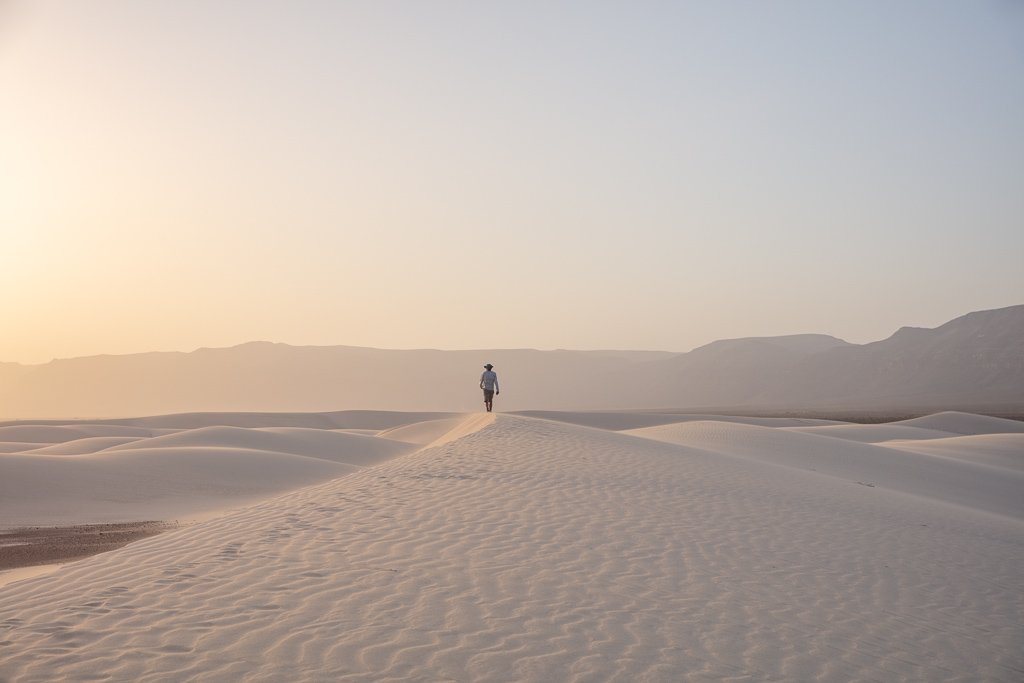
South
Southern Socotra is the more off-beaten-path side of the island with sparse villages and wild beaches. Don’t miss the impressive Dagub Cave and the never ending dunes of Zahek and Hayf.
- Zahek & Hayf Sand Dunes– These fields of bright white sand dunes seem to continue you forever, that is until they drop off into the Indian Ocean. Early morning is a nice time to visit as winds are usually dead calm, however, the sunset is hard to beat.
- Omaq Beach- This quiet beach along Socotra’s southern shore is the perfect place to camp and take in the island’s peaceful atmosphere.
- Dagub Cave- The cave doesn’t go very deep but the opening of it is massive, to say the least.
- Kalysan- A gorgeous string of wadi pools the gnarl together near the southwest of Socotra.
- Momi Plateau- Just due south of Homhil Protected Area, Momi offers amazing views over the island as well as a scattering of frankincense, bottle and cucumber trees.
- Dahaisi Cave- This cave is quite an effort to reach, but has some interesting art carvings found on the walls. To reach the cave you’ll need the help of a local guide to show you the way across the Momi Plateau.
- Steroh- The village you’ll reach on the southern coast of Socotra as you descend out of the mountains along the main road crossing the island from the north.
Read: 10 days on Socotra Island, Yemen
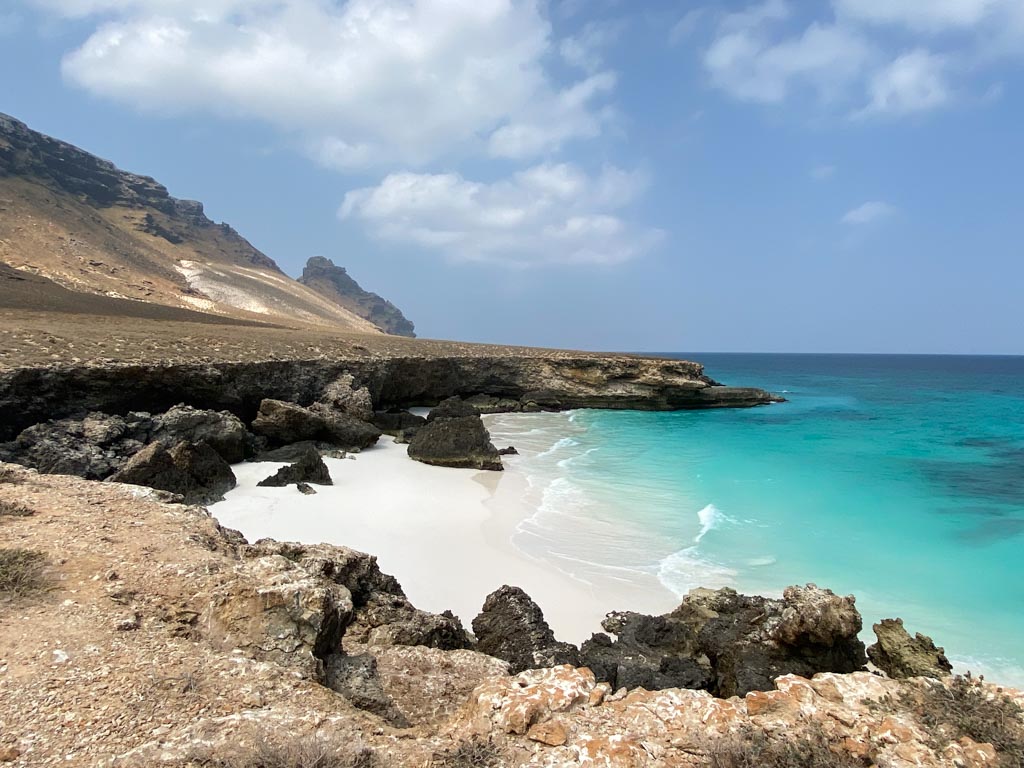
The Other Islands Of The Socotra Archipelago
Socotra is actually comprised of six islands. These include Abd al Kuri, Samha, Darsa, Kal Firun, and Sabuniya aside from the main island of Socotra.
Only Abd al Kuri and Samha are inhabited (aside from the main Socotra Island). Samha and Darsa together are often referred to as ‘Al Akhawain’ translating out to ‘the brothers’.
I am tentatively planning another Outer Islands expedition for March 2024 that will take a group to explore these rarely visited islands as they require chartering a boat to reach them. Visit our page for this Socotra Archipelago Expedition to see full details and sign up.
- Abd al Kuri- Abd al Kuri is the largest of the outer islands of the archipelago, located about 65 kilometers west of Socotra Island and home to less than 1,000 people. There are five main villages on the island and most inhabitants live off of fishing. Abd al Kuri is actually home to its own endemics including the Euphorbia abdalkuri, the rare Abd al Kuri Sparrow, and two species of lizard, the Mesalina kuri, and the Pristurus abdalkuri.
The landscape of Abd al Kuri is arid, with hills that bisect the island and areas of sand beaches and high rocky cliffs. The sovereignty of Abd al Kuri is actually still disputed between Yemen and Somalia.
- Samha- Samha is the smallest of the inhabited Socotra Islands and is home to a small population (I’ve seen estimates of around 100-200). There’s only one single village on Samha located on the northwest of the island. Much like Abd al Kuri, its sovereignty is disputed between Yemen and Somalia. The island is quite rugged and home to the rare endemic Begonia samhaensis.
- Darsa- The smallest island of the Socotra Archipelago at 5.4 square kilometers and is completely uninhabited by humans. The island is mostly a barren-looking rock, though an unbelievably beautiful beach sits on the northwest coast that’s backed by craggy caves. Darsa is home to an abundant bird population and is infested by rats, which is why spending the night out here is not recommended.
- Kal Firun & Sabuniya- Both Kal Firun and Sabuniya are rocky outcrops and not full-blown islands but are a part of the archipelago. Both islands are important to birdlife. Sabuniya is located about 15 kilometers off of Shua’ab Beach on Socotra Island’s northwest coast and Kal Firun is located about 25 kilometers north of Abd al Kuri.
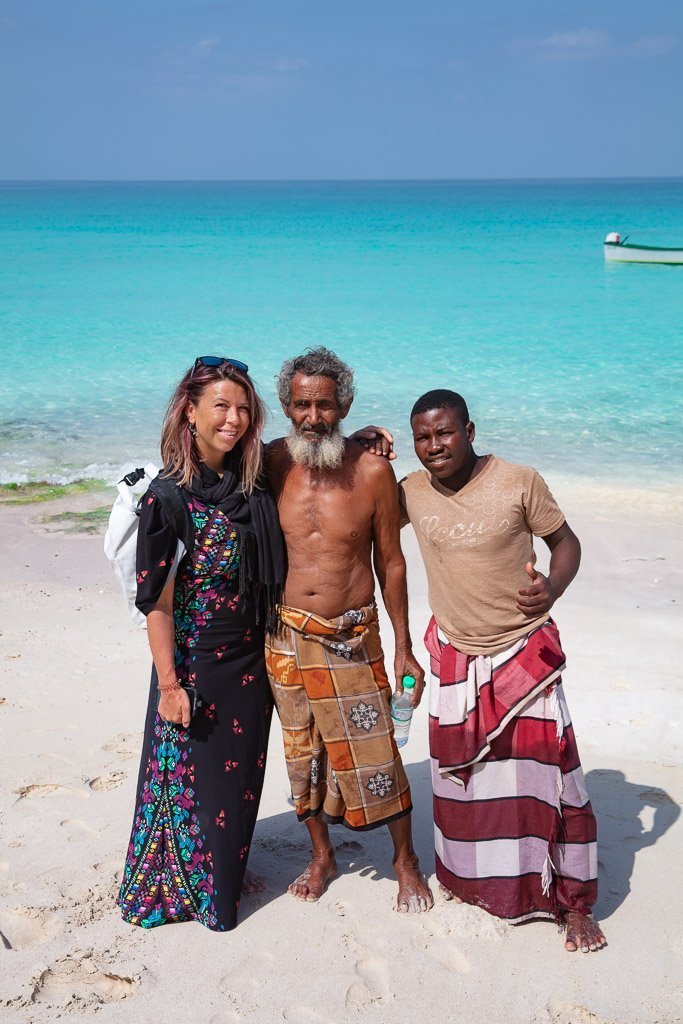
Solo Female Travel In Socotra
Socotra is a great place to visit for intrepid solo female travelers. I actually visited “solo” (guide was mandatory) on my first trip in 2014 (my 2019-2024 visits were with a groups I brought to Socotra with the help of my local partners.
It’s worth noting that you won’t truly be solo as you’ll be guided on the island. That said, you should have plenty of chances to interact with local women.

Don’t miss the highest concentration of Dragon Blood Trees in Firhmin Forest
Flora & Fauna
Socotra is famous for its endemic species found nowhere else on Earth. Many of the endemic fauna includes birds, reptiles, scorpions and spiders. Here are a few of the endemics that can be found on the island:
Flora
- ‘Dragon Blood Tree’ Dracaena Cinnabari– Family: Asparagaceae. The famous trees are known for their unusual shape and blood-red sap. An icon of Socotra.
- ‘Bottle Tree’ Adenium Obesium Socotranum– Family: Apocynaceae. Often described as looking like an elephant’s leg. Bottle trees are a type of desert rose and bloom pink flowers.
- ‘Cucumber Tree’ Dendrosicyos Socotranus– Family: Cucurbitaceae. The only member of the Cucurbitaceae family that grows in tree form.
- ‘Socotra Frankincense’ Boswellia Socotrana– Family: Burseraceae. Socotra is home to several types of Frankincense, however this is the only endemic Frankincense tree.
- ‘Socotra Acacia’ Acacia Pennivenia– Family: Fabaceae. Found all throughout the island.
- ‘Socotra Pomegranate’ Punica Protopunica- Family: Lytheaceae. Bears miniature pomegranates that are often too bitter for most people’s liking. The skins are usually crushed and then cooked down into a paste that is used to heal sores and wounds.
- ‘Socotrine Aloe’ Aloe perryi- Family: Asphodelaceae. A type of aloe vera with important pharmaceutical and medicinal properties.

Fauna
- ‘Socotra Cisticola’ Cisticola Haesitatus
- ‘Socotra Sunbrid’ Nectarinia Balfouri
- ‘Socotra Starling’ Onychognathus Frater
- ‘Socotra Sparrow’ Passer Insularis
- ‘Socotra Warbler’ Incana Incana
- ‘Socotra Golden Winged Grosbeak’ Rhynchostruthus Socotranus
- ‘Socotran Chameleon’ Chamaeleo Monachus
- ‘Socotran Tarantula’ Monocentropus Balfouri
- ‘Socotran Butterfly’ Bicyclus Anynana
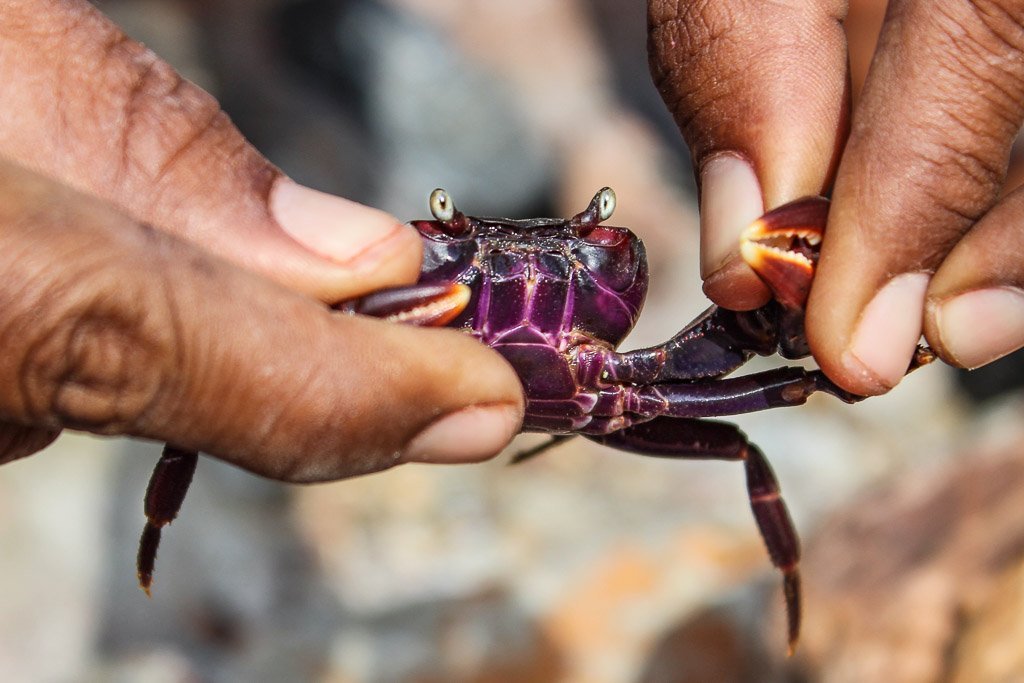
Socotra Travel Safety
Socotra has been spared from the fighting that has gone on in mainland Yemen since the start of the war in 2015. The island has suffered consequences of the war such as lack of transport on and off the island, infrequent shipments from the mainland, price inflation, and loss of revenue from the tourism the island once brought in.
Socotra has also suffered a catastrophic cyclone, followed by another cyclone in late 2015 that damaged much of the little existing infrastructure. Some have been rebuilt since by “humanitarian efforts” by the UAE and to a lesser degree Saudi Arabia– though the efforts appear to be more of an attempt to gain influence on the island than a true offer of help.
Your biggest concerns visiting Socotra will be staying hydrated, protecting yourself from the sun, avoiding injuries while trekking, and food-borne illness. Look out for jellyfish when participating in water activities.

Socotra Souvenirs
Not really the shopping Meccas of nearby Dubai or Kish Island, but there are a handful of souvenirs to purchase.
- Socotri Honey- Socotra has been prized historically for its honey. You will likely pay $35-50 USD depending on availability for a 1L bottle.
- Dragon Blood Resin- in Homhil children will typically collect dragon blood resin, dry it, and sell it in little bags to travelers. You can usually find it for sale in Hadiboh as well. Historically the resin has been used medicinally, as a cosmetic, and as a varnish.
- Frankincense- Much in the same way dragon blood is collected so is Frankincense. You can usually find them being sold in Homhil and Hadiboh.
- Socotri Posture Belts- These woven 2-inch thick belts are wrapped around the lower back and knees slightly raised up while sitting cross-legged. Locals believe it helps correct bad posture.
- Fouta- This is the skirt traditionally worn by Socotri men and still worn to this day. They can also make nice scarves and sarongs for women.

Communication & Electricity
If you’re looking to be well connected with decent WiFi and mobile reception and have a regular electrical supply you should plan a trip elsewhere.
Mobile & Internet- There is 3G coverage in Socotra, though not in many places. Hadiboh will have the best coverage. Etisalat has the best coverage though the SIM cards must be purchased in the UAE prior to your trip.
Electricity- Electrical supply in Socotra is irregular. Realistically only Hadiboh has a grid though outages are frequent. In other areas of Socotra, solar panels and generators are common though there may or may not be sockets. If there are you’ll find Euro 2-pin and British 3-pin sockets.
Ultimately, it’s smart to plan as if you will not have electricity during your stay. Bring your own solar panel and battery banks.
It is possible to charge electronics while in the car. Bring an adaptor for the car cigarette lighter.

What To Pack For Socotra Travel
Clothing
- Hat
- Sunglasses
- Hiking Shoes, Boots Or Sandals
- Sandals
- Trekking Pants & Shirts
- Swimsuit
- Light Jacket or Fleece
- Scarf
- Sarong
- Socks
- Underwear
Toiletries & Medications
- Biodegradable Cleansing Wipes
- Hand Sanitizer
- Toilet Paper & Tissues
- Environmentally/Reef Friendly Sunscreen
- Moisturizer
- Environmentally Friendly Soap, Shampoo, Conditioner
- Razor
- Toothbrush, Paste & Floss
- Deodorant
- Cotton Swabs
- Lip Balm
- Bug Repellent
- Hair ties & Brush/Comb
- Feminine Hygiene Products
- Contact Lens Solution
- Any RX Or OTC Medications You Normally Take
- Imodium
- Ibuprofen Or Tylenol
- Antihistamines
- Broad Spectrum Antibiotic
- First Aid Kit
Electronics
- Solar Panel
- Battery Bank
- Car Adaptor
- Camera & Lenses
- Spare Camera Batteries
- SD Or CF Cards
- Dust Proof Camera Protector
- Dry Bag
- Tripod
- Cleaning Wipes + dust blower
- Chargers & Cables For Electronics
- SOS Beacon/Satellite Messenger
Miscellaneous
Read the full post: Socotra packing list and prep guide

Socotra Tours
Check out the expeditions to Socotra I have departing over on Safar Expeditions.
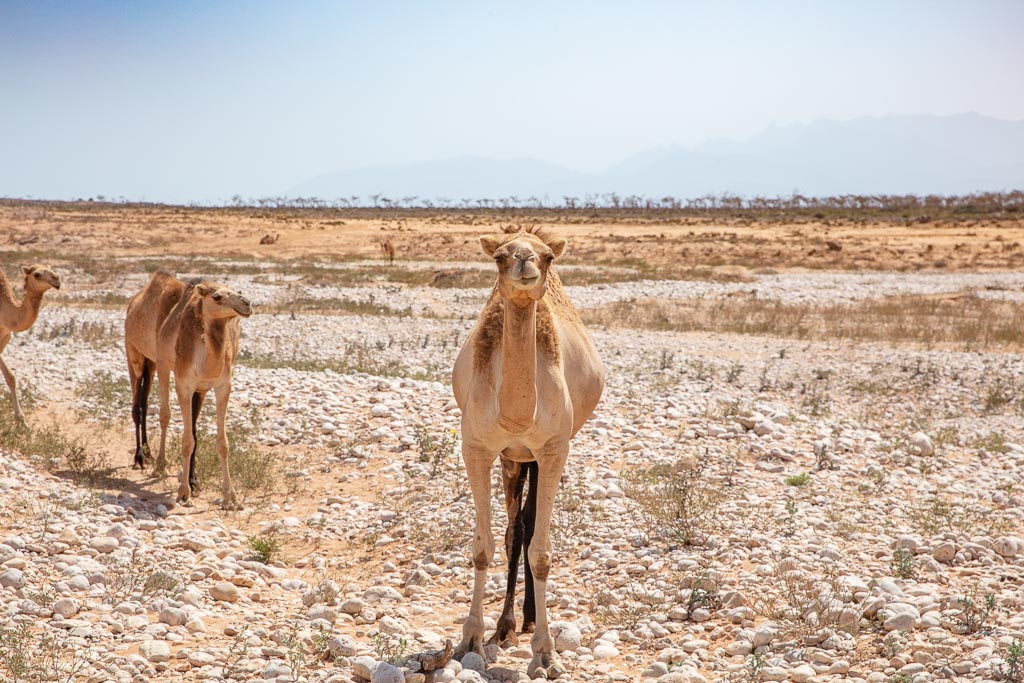
Socotra Travel Costs
Without a doubt, Socotra is not a cheap destination to visit at present. There are only a handful of tour operators on the island, the Yemeni rial can fluctuate wildly, Yemenia has a monopoly on access and the costs of goods is high thanks to the island’s remote location. There is no question about it: Socotra travel is not cheap. Here is an estimate on what you can expect for cost:
- The roundtrip Yemenia Cairo-Socotra-Cairo flight costs $1,160 USD for an economy class seat
- The roundtrip Air Arabia Abu Dhabi-Socotra-Abu Dhabi flight costs $860 USD for an economy class seat
- A one week tour of Socotra will cost about $1,000-3,000 USD per person (this price can fluctuate some thanks to an unstable currency and economy)
- Visa cost is $170 USD
So for one week in Socotra, you should plan for $2,000-3,000 per person. You should also budget money for tips ($20 USD per day was suggested in the past to be split between a guide and a driver), personal travel insurance, and any souvenirs you’d like to purchase.
Please note that the price of tours does not decrease based on the number of people in your group (I have enquired about this with local operators and this is their policy). A tour will include a guide, driver, 4WD, food, camping gear, and activities and typically the price is not negotiable.
Please do not send me emails demanding ways to cut any of these costs. I do not have any influence nor control of the rules or costs in Socotra and quite frankly Socotris are struggling, so asking for discounts in a destination that is being affected economically by a brutal war I personally think is a slap in the face to the Socotri people who are welcoming tourists to their homeland.
Other Random Socotra Travel Information Worth Noting
- Don’t take photos of women and girls unless you have full permission from them. Many times women will scurry away at the sight of foreigners and especially of a camera.
- There are ice cream trucks on the island. I saw one on a desolate stretch of road near Arher (and if you’re wondering– yes, I chased it down and bought ice cream) and another in Hadiboh.
- Drones can be a bit tricky to get to Socotra if coming from Cairo. Since many will arrive by this Cairo flight, it’s worth mentioning that drones are totally illegal in Egypt. You may be able to talk with officials at the airport and let them know you’re transiting but they likely will make you lock it up at the airport before they let you out. If you’re lucky you can pick it up when you are departing but plan for a lengthy process and a run around getting it. Make sure to arrive at the airport extra early to deal with it when you are flying out to Socotra. On a fall 2019 trip of ours, two travelers had their drones confiscated and destroyed, so you can’t always be lucky.

Need Any More Information On Socotra Travel?
Ask your Socotra travel questions in the comments below.
